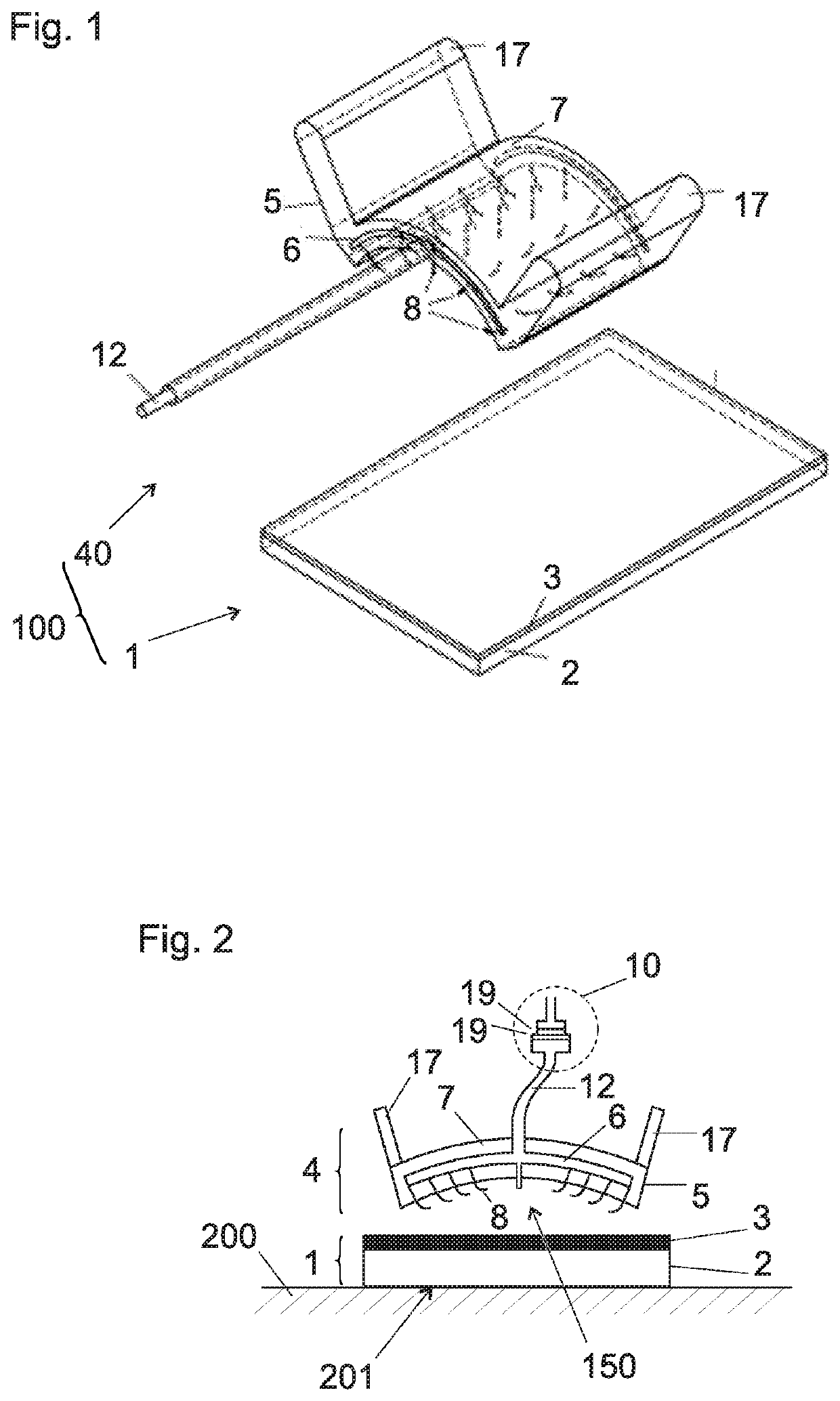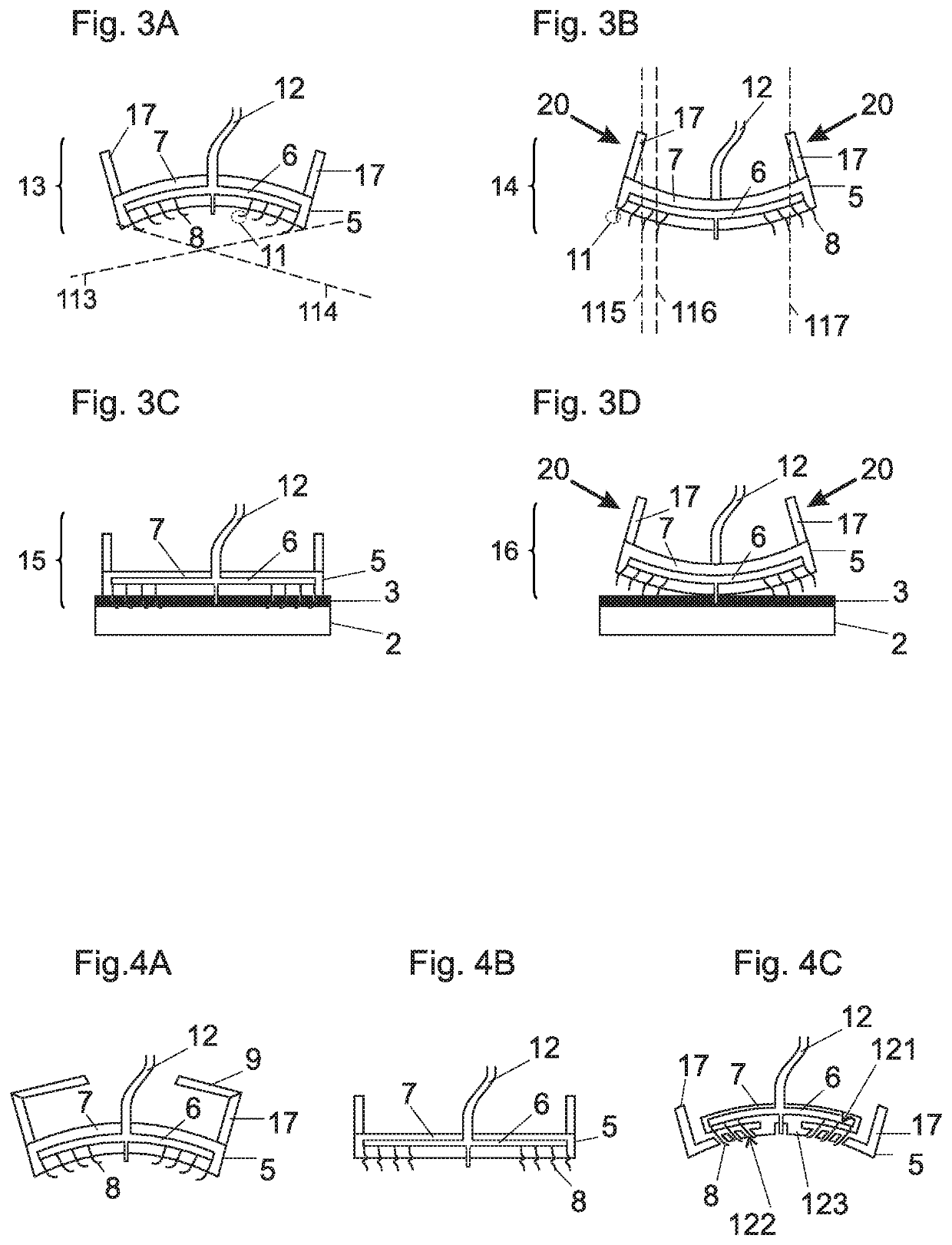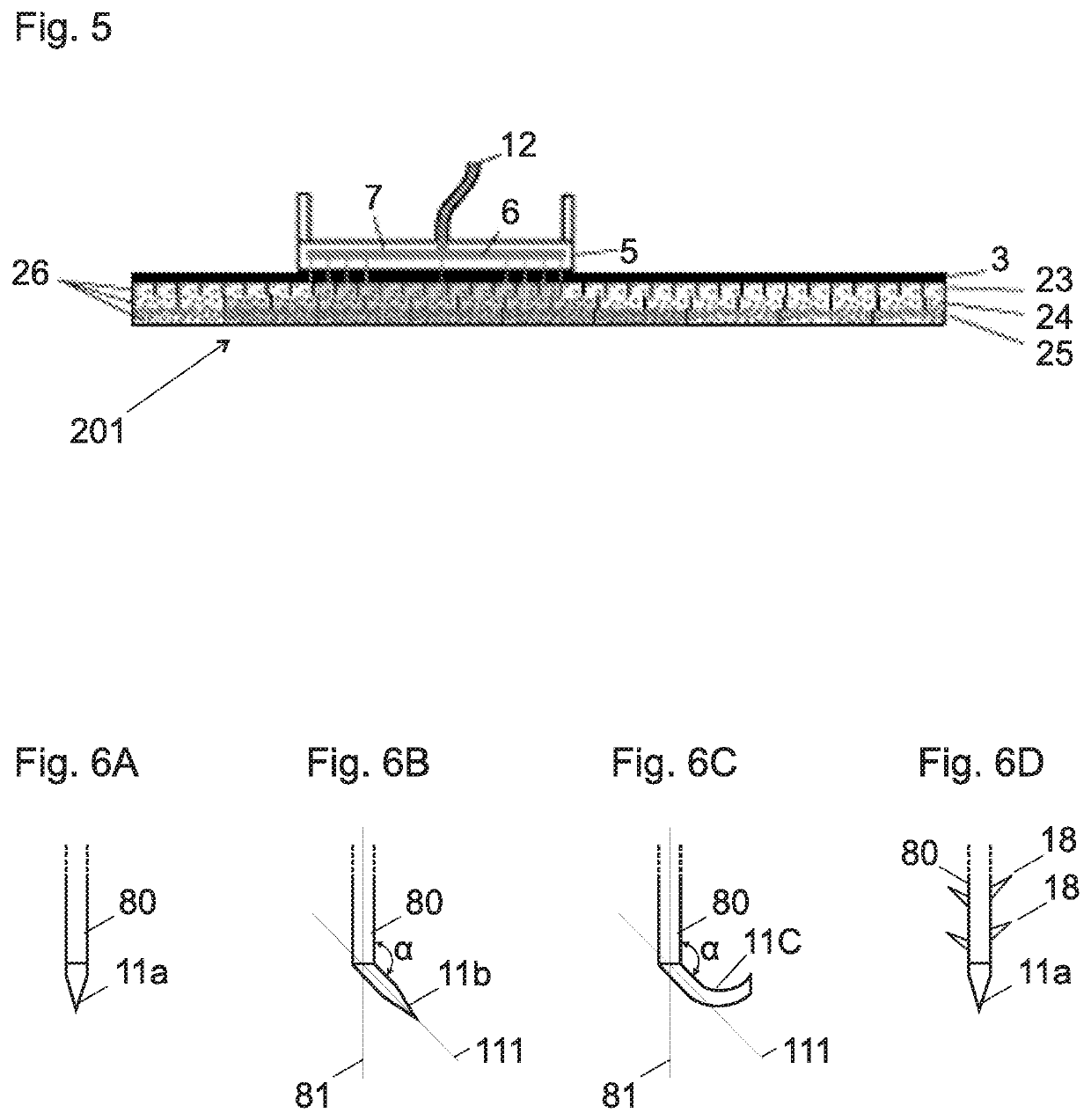Electrode and connector assemblies for non-invasive transcutaneous electrical stimulation and biological signal sensing
a technology of transcutaneous electrical stimulation and connectors, applied in the direction of diagnostic recording/measuring, application, therapy, etc., can solve the problems of damage to electrodes, inability to control the force applied while connecting and disconnecting electrodes, and the area of conductive substrates, etc., to achieve the effect of convenient connection and reduced manufacturing costs
- Summary
- Abstract
- Description
- Claims
- Application Information
AI Technical Summary
Benefits of technology
Problems solved by technology
Method used
Image
Examples
Embodiment Construction
[0035]FIGS. 1 and 2 show an assembly 100 for non-invasive transcutaneous electrical stimulation or biological signal sensing.
[0036]The assembly 100 is configured to deliver electrical currents to and / or to sense electrical signals from a skin portion 200 of an individual. The assembly 100 comprises an electrode 1 for entering in contact with the skin portion 201, and a conductor 40 for operationally connecting the electrode 1 to a monitoring or stimulating device (not illustrated).
[0037]The electrode 1 is a non-invasive transcutaneous electrode. The electrode is configured to deliver electrical currents to and / to sense electrical signals from the skin portion 200 of an individual by means of an electrical conductive portion 2 having a surface 201 for contacting the skin portion. Advantageously, the electrode comprises an insulating stratum 3 covering the electrical conductive portion 2, in order to prevent the user from undesired electrical contact during the procedure.
[0038]The ins...
PUM
 Login to View More
Login to View More Abstract
Description
Claims
Application Information
 Login to View More
Login to View More - R&D
- Intellectual Property
- Life Sciences
- Materials
- Tech Scout
- Unparalleled Data Quality
- Higher Quality Content
- 60% Fewer Hallucinations
Browse by: Latest US Patents, China's latest patents, Technical Efficacy Thesaurus, Application Domain, Technology Topic, Popular Technical Reports.
© 2025 PatSnap. All rights reserved.Legal|Privacy policy|Modern Slavery Act Transparency Statement|Sitemap|About US| Contact US: help@patsnap.com



